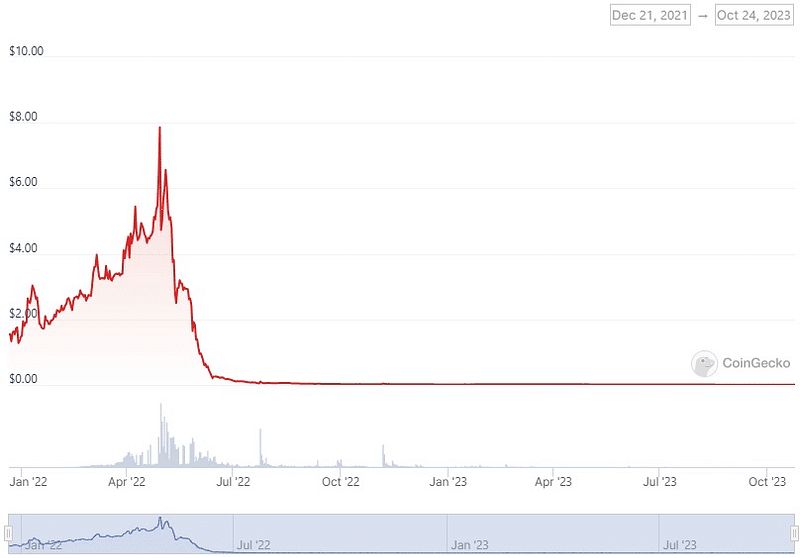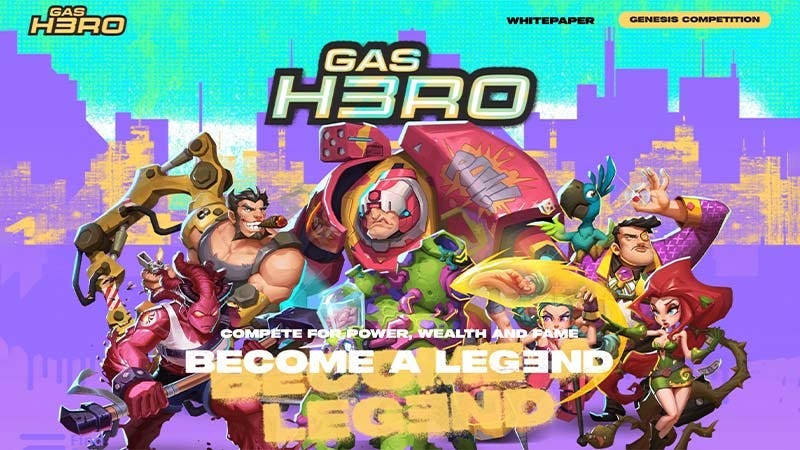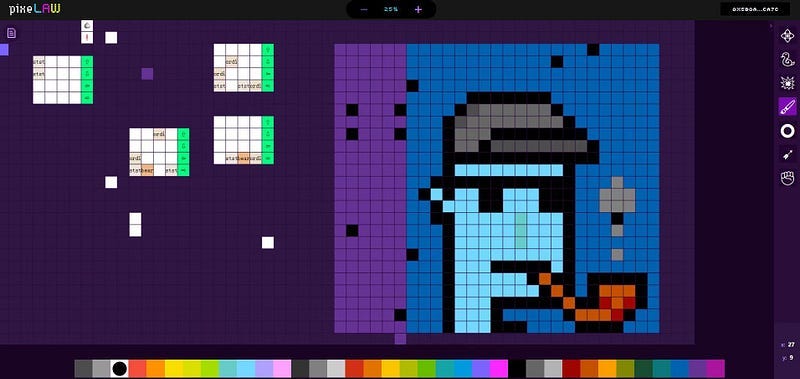The Anatomy of STEPN: Beyond the Ponzi
STEPN is not over Ponzi. What sets it apart are its incorporation of gambling and religion.
Introduction
What do you all think about STEPN? If you believe it’s just a defunct Ponzi scheme, you’re greatly mistaken. In fact, the ecosystem is operational, and despite the bear market, they continue to build and strive to create something monumental. Having followed STEPN since the historic bubble burst in 2022, I’ve formed a coherent opinion on what they aim to achieve, and based on my interpretation, I’ve written this article. There may be inaccuracies, and if so, I invite corrections through comments or on X (Twitter).
Glossary
FSL (Find Satoshi Lab): The operator behind projects including STEPN.
STEPN: A Move to Earn blockchain game where earning is achieved through walking, currently active on the Solana, BNB, and Ethereum chains. To play, purchasing an NFT shoe is necessary.
GST: STEPN’s utility token (infinite issuance), varies across different chains.
GMT: A governance token (finite issuance) used across all chains, including in Gas Hero.
Badge: Earned in STEPN based on achievements.
MOOAR: An NFT marketplace operated by FSL.
DOOAR: A DEX operated by FSL, primarily dealing with FSL’s tokens.
Gas Hero: A new season-based game by FSL. Initially released but has returned to closed beta for adjustments.
FSL Point: A point system introduced by FSL, primarily accumulated through transactions and airdrops, currently exchangeable at a rate of 1 point to 1 GMT.
Proof that STEPN’s Ecosystem Continues to Operate
Blockchain Games (BCG) under the Play to Earn model are generally considered Ponzi schemes, and in fact, they often are. I’d like to explore the definition of a “Ponzi scheme,” as per the SEC, which is “an investment fraud that pays existing investors with funds collected from new investors.” Essentially, it’s a project where the money from new investors pays off the earlier ones without creating any real value.
In my view, STEPN initially operated as a kind of Ponzi scheme. This is because the prices of tokens and NFTs heated up not due to any real change in value, but because newcomers drove the prices up. Few, if any, benefited from the “walking” aspect in this short period, and it mainly served the role of a slot machine. After the bubble burst, prices plummeted as shown in the first diagram, and most people left. However, the STEPN ecosystem has managed to survive stubbornly.
Typically, after the initial pump and dump, most BCGs shut down their services shortly thereafter. Recently, SleeFi serves as a fresh reminder. While pump and dump is somewhat uncontrollable for operators, the true worth of a project is tested after these events. In my view, STEPN and FSL have diligently continued to build, resulting in an ecosystem that no longer relies on new investors to function.
A surprising fact supporting this is that GST’s price has risen in 2023, which is abnormal compared to other BCGs, especially since it occurred before the recent bull market.
So, why does the ecosystem function? Well-designed game mechanics play a role. The introduction of mint scrolls that allow FSL to control the number of NFTs, an enhancement system that burns NFTs, and the encouragement of massive enhancements through a rainbow shoe system are all noteworthy.
However, I believe the essence lies elsewhere. FSL’s ecosystem is sustained by gambling and religion. I will elaborate on these in the article.
Gambling Embedded in STEPN
Gambling has fascinated many since ancient times, from Baccarat to various forms currently enjoyed. Blockchain has revolutionized gambling. There are meme coins and obvious Ponzi schemes, as well as gacha-style cashable rarity fluctuations during mints.
Generally, gambling is a negative-sum game where the more people play, the more the house profits. STEPN is filled with gambling elements. Every walk can earn a mystery box with random contents, and minting shoes also involves chance with undisclosed odds, dulling people’s decision-making and encouraging inherently low-expectation gambling. However, as long as individuals can protect themselves, the more gambling there is, and the more it’s played, the happier everyone is, theoretically. That’s because people gamble of their own volition, believing they will win.
In STEPN, gambling comes in various forms and rates, from several cents to several hundred thousand USD per attempt. It’s arguably a more universally enjoyable casino than Las Vegas. The craziest gamble involves a participation fee in the tens of thousands of dollars, often resulting in losses, but occasionally hitting a jackpot worth over $30,000 with undisclosed odds. Conversely, some gambles with disclosed odds exist, and market distortion ensures that profitable gambling opportunities also exist.
Of course, one could choose to simply walk and earn without gambling. However, in doing so, you would have to endure the boasting of friends who have enriched themselves through successful gambling.
This leads to the following rationale: even if you despise STEPN for your gambling losses, it’s not STEPN’s fault but rather because you were “unlucky” or “not smart enough.” You had the option not to gamble, and you could have found gambles with a positive expectation or managed your funds to match the probabilities.
The terrifying aspect of STEPN is that they don’t earn through gambling, as the tokens paid in gambling are all burned. The more users gamble, the more the ecosystem benefits indirectly. They are merely providing the gambling venue at their own cost.
FSL as a Religion
STEPN is just the project name; the entity behind it is FSL (Find Satoshi Lab). They are evidently establishing a religion. I will examine this from various angles such as social significance, status, doctrine, and religious activities.
Social Significance
One of FSL’s standout aspects is its commitment to a grand cause. This not only declares their overwhelming goodness but also affirms the believers of FSL.
Prominent among these causes are:
Bringing people from Web2 to Web3.
Promoting health.
Carbon offsetting.
Bringing People from Web2 to Web3
Having attended a STEPN meetup, I found it pleasantly unusual. As a co-founder of a crypto project, I’ve participated in various events like ETH Global, but the demographic at STEPN meetups is distinctly different. Most attendees are regular employees or homemakers in their 30s and 40s, with no technical discussions taking place. This likely includes a significant portion of the mass market, facilitated by STEPN’s excellent UI/UX and simplicity. They also introduced a system called spark, which allows users to purchase NFTs with fiat currency directly, bypassing the need for a wallet or cryptocurrency transactions. Though slightly pricier, this may be better for many considering the lower learning curve. A lot of effort seems to have gone into introducing spark, indicating a committed action towards bringing Web2 people into Web3.
Promoting Health
In STEPN, the NFT shoes act as mining rigs, and walking equates to mining. While people generally start for monetary reasons, the result is enhanced health. Additionally, opting to walk for commuting helps reduce carbon dioxide emissions, thus contributing to the health of our planet.
Carbon Offsetting
Moreover, FSL invests part of its profits in carbon credits, actively working to reduce carbon dioxide emissions, literally aiding in planetary health.
Social Status
Another crucial aspect is FSL’s numerous collaborations with various companies. Not only do they generate revenue by selling collaborated NFTs, but securing social status is a significant joy for FSL. This social standing helps believers easily advocate FSL to acquaintances, enhancing their self-esteem.
Doctrines and Scriptures
FSL lacks formal scriptures. While the whitepaper might seem like scripture at first glance, it is not. It merely communicates the game’s specifications rather than providing guidelines for action or conveying a religious narrative. The doctrine is taught either orally or implicitly. FSL’s management shares important insights during AMAs and subtly indicates values through actions and rewards, projecting the direction of FSL and the persona of those who will be ‘saved’.
Making doctrine obscure benefits FSL by promoting discussion and encouraging investment across the ecosystem rather than intense focus on specific investments, selecting those with high faith for salvation. Alarmingly, FSL can freely modify these at will.
Those Who Believe Are Saved
The notion that “those who believe in FSL are saved” is prevalent on social media, indicating that users unconsciously perceive FSL as a religion. This value system was formed because FSL has indeed ‘saved’ those who have correctly believed in it. The “correct way” to believe, whether simply walking or purchasing specific assets, remains unclear, but there are ways to discern this. My method suggests that the more senseless the act or the greater the need for salvation, the more likely one is to be saved.(NFA)
As evidence of FSL’s attempt to create a religion, I would like to introduce the history of the GasHero Badge. One day, suddenly, after a meaningless survey, a limited edition GasHero Badge was announced.
Users didn’t understand what GasHero was, and the only way to get the badge was to burn about $2,000 worth of gas. That $2,000 doesn’t contribute at all to FSL’s revenue; it’s just burned away. It’s utterly meaningless.
However, as a result, GasHero turned out to be a new FSL gaming project, with significant airdrops to badge holders, and the current value is approximately $15,000. If FSL were to let its followers engage in meaningless actions without saving them, FSL would suffer from losing followers, so FSL has no choice but to save them. (Note that this part is particularly based on my own thoughts and does not encourage meaningless or reckless investments in any way.)
Religious Acts of Walking
STEPN users walk. The actions available during walking are limited to thinking, listening, and speaking, and one invariably contemplates STEPN and FSL during startup and cessation. Moreover, they always seek monetary rewards while walking, which essentially means seeking salvation from FSL. In other words, it’s nothing less than offering prayers to FSL. If one does not believe in FSL, they can simply sell their shoes and stop using STEPN; as long as they use STEPN, they are seeking salvation from FSL.
Praying is a critical act in traditional religions, and there’s a significant barrier before one commits to joining a church and praying daily. FSL has shifted this paradigm by attributing the daily act of walking with faith in their cause.
Religious Gatherings: Meetups
FSL organizes various meetups, and believers also frequently hold spontaneous gatherings among themselves. What sets STEPN apart is that these gatherings allow for communal prayer. It’s akin to a mobile church. In religious contexts, the importance of gatherings is self-evident, but in the case of STEPN, there’s much to do at these gatherings. Not only is prayer involved, but due to the oral nature of the doctrine, it’s also an opportunity to confirm the correct methods of prayer and teachings.
Furthermore, gambling is also part of the entertainment at these gatherings. There is nothing as terrifying as the gambling offered by religious organizations; if a believer loses (is not saved) in a gamble, it’s their own fault. Additionally, from an entertainment perspective, the act of losing itself might be considered enjoyable. The real issue arises when significant profits are made, as at that moment, someone is visibly saved by the religion during the gathering. Thus, this mobile church offers not only prayer and study sessions but also the miraculous chance of salvation.
Meetings also occur frequently online, keeping believers busy with their faith, witnessing frequent miracles of salvation online, and continually strengthening their faith.
Salvation and Revelation through Airdrops
Recent airdrops serve as prime examples of salvation and revelation. Based on the badge system, those who walked (prayed) more received rewards, and genesis holders were rewarded according to the duration they held (believed without selling). The timing of these airdrops allowed believers to check if they had “correctly” practiced their faith, and those who had were saved, while also providing guidelines for future actions.
These are planned to occur annually, prompting believers to continuously ponder what the “correct way” might be.
At this point, it should be clear that FSL operates as a religious organization that provides gambling. Next, I will discuss their actions during the recent bull market and examine their latest developments and future potential.
MOOAR and DOOAR
Throughout the bear market, they consistently worked on community-building through events while also developing products. Notably, MOOAR and DOOAR stand out.
MOOAR
MOOAR is an NFT marketplace managed by FSL, offering various benefits through subscriptions and hosting irregular events where NFTs can be purchased at a lower cost through raffles.
MOOAR - NFT Marketplace
MOOAR - A fun place to create and trade NFTsmooar.com
DOOAR
DOOAR is a decentralized exchange (DEX) where tokens necessary for playing FSL’s products can be swapped. According to the whitepaper, all fees collected are used for the ecosystem.
These platforms were essential for FSL to establish because they needed a mechanism where the fees from user interactions within the BCG go to FSL, especially important before new projects start. The strength of these platforms was vividly demonstrated with the launch of Gas Hero.
New Game: Gas Hero
In early 2024, FSL released a game called Gas Hero. It topped the NFT transaction volume on the polygon chain but faced issues with the team and model, leading FSL to revert it to closed beta and compensate users for half of their losses. Although this seemed like a failure at first glance, from a long-term perspective, it’s not a significant problem. This new project has adequately demonstrated FSL’s potential for the future.
Gas Hero
Battle for Power, Wealth, Glory. Become a Legend.gashero.com
A notable aspect of Gas Hero was that it didn’t start by selling NFTs or issuing new tokens, unlike typical BCG projects that launch with NFT and token sales, where the operators often cash out early. This causes constant anxiety among users about a potential race against the operators and other users, leading to a Ponzi-like structure where money is snatched away.
Since FSL is a religious organization with a massive community and platforms like MOOAR for collecting fees, they don’t need to conduct initial liquidity sales. Even without selling NFTs, as long as users transact, FSL generates revenue through fees.
Moreover, what’s crucial is that redemption coupons were distributed to the faithful for initial liquidity, meaning that while the costs for the operators were almost zero, the faithful could reap substantial profits.
Additionally, just as STEPN is already deployed on three chains, providing existing games on different chains is possible. Overdoing this might not be advisable due to reputation and management costs, but it’s certainly feasible.
And importantly, providing new gambling venues not only generates revenue through fees for FSL but also leads to the burning of GMT, enhancing the value of GMT and the overall ecosystem.
FSL has a high incentive to provide new gambling venues, meaning salvation for the faithful within the FSL ecosystem is planned.
In summary, this means:
FSL can easily start new games.
In Gas Hero, initial NFTs were airdropped to the faithful.
FSL generates revenue through fees.
The value of GMT and the ecosystem rises as GMT is burned.
And all these activities are relatively easy to repeat.
The Final Piece: FSL Point
However, a problem remained with the above systems: it was difficult for FSL to judge whether one was praying “correctly.” Holding expensive Genesis items or high-difficulty badges are obvious markers, but the assessment should be more fluid.
This is where the FSL Point comes into play. Recently introduced, FSL Points are said to be usable for purchasing goods, and currently, one point can be exchanged for one GMT. The ways to acquire FSL Points are challenging, with significant amounts only being attainable through compensations for losses in Gas Hero and during a massive airdrop in April. By the way, during the reimbursement process for GasHero, believers were not informed that points could be exchanged for GMT at an equivalent rate, testing their faith. FSL Points are akin to “exchangeable prayer points,” accumulating through daily activities. I believe these points will form the basis for ongoing salvation based on one’s “prayer points.”
Afterword
I think FSL has provided a centralized solution like BCG to move beyond the realm of Ponzi schemes. As a founder in the crypto field, I need to explore the strengths of blockchain from a completely different angle.
That brings me to my focus on a field called Autonomous Worlds. It’s difficult to explain in a single phrase, but it revolves around creating worlds from the bottom-up rather than the top-down. In AW, users can not only play but also create various elements within predefined rules. For example, using GMT, one could independently develop new apps similar to Gas Hero.
For more details, please refer to “Autonomous Worlds(Part 1)” and “The Survey of the Definition of Autonomous Worlds”.
We are building a project called PixeLAW, which started after winning the first prize from Starknet at the ETH Global Paris hackathon in July 2023.
Simply put, it’s a pixel art game where you can create various things, not just pixel art but also games like 2048, and even establish new rules that force others to adhere, effectively allowing users to create their own nations.
We have a game event planned for July, so please follow us on X (Twitter) and join our Discord.
Disclaimer
This content is intended solely for informational purposes and should not be interpreted as investment advice. Furthermore, the author and related parties bear no responsibility for any damages or losses that may occur due to or in connection with the information provided in this content.









